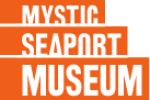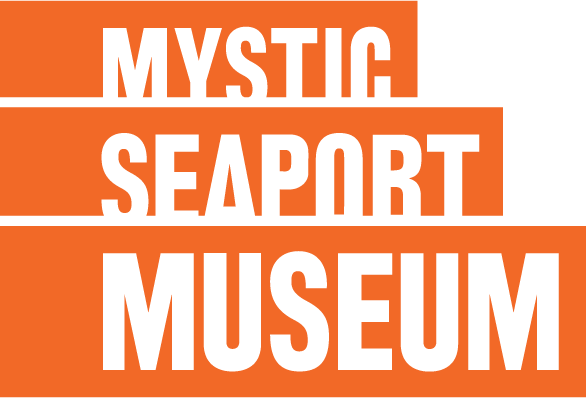Category: News
Read the latest Mystic Seaport news.
After a long transit from Buzzards Bay, Mass., the 1841 whaleship Charles W. Morgan arrived at City Pier in New London, Conn. early in the morning on Wednesday, July 30. Due to the length of the journey, the ship was towed and not sailed on this leg of the voyage. This is the last stop on an historic 38th Voyage that included port visits in Newport, R.I., Vineyard Haven, Mass., New Bedford, Mass., the Stellwagen Bank National Marine Sanctuary, Boston, and the Massachusetts Maritime Academy in Buzzards Bay.
While in New London, the vessel will head out onto Long Island Sound for three final day sails on July 31 and August 1-2. The ship will not be open to the public during this time.
The Morgan is scheduled to make her triumphant return to Mystic Seaport at approximately 5:30 p.m. on Wednesday, August 6. A homecoming celebration, set to begin at 5 p.m., will await her arrival at Chubb’s Wharf. Elements of the 38th Voyage dockside exhibition that accompanied the ship’s port visits, including Spouter, the 46-foot long inflatable sperm whale, will be set up and open to visitors. Schaefer’s Spouter Tavern will remain open for food and beverage service, although Museum exhibits will be closed after 5 p.m.
Mystic Seaport will offer a reduced admission of $5 on August 6. Museum members and children ages 5 and younger will be admitted for free.
In the event of a weather delay on August 6, the Morgan‘s return to Mystic Seaport will be rescheduled for August 7 or, if need be, August 8. Please visit the 38th Voyage homepage for the latest information on the status of the Morgan.
The Charles W. Morgan will reopen to the public at Mystic Seaport on August 9.
Mystic – Mystic Seaport and the Mashantucket Pequot Museum & Research Center received a grant of $30,095 from Connecticut Humanities (CTH) to support a project, Connecticut Indian Whalers: Work, Community, and Life at Sea. The grant was given through the Connecticut at Work initiative, a program that supports a wide range of community-oriented programs that examine the past, present, and future of work in the lives of Connecticut residents, including The Smithsonian Institutions’ The Way We Worked exhibition as well as dozens of small exhibitions, internet-based applications, lectures, panel discussions, author talks, book and film discussions, and similar programming.
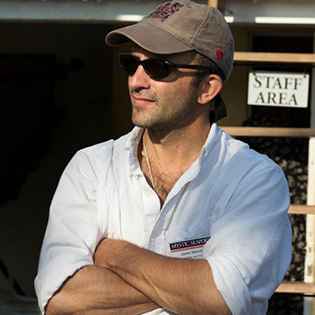
The project, spearheaded by Jason Mancini, Ph.D., senior researcher at the Pequot Museum, features a suite of digital, exhibit, and program offerings designed to raise school and public awareness about the men of color from Connecticut who labored on 19th-century whaling ships, in particular Native American men whose work experience was strongly intertwined with their social and kinship networks.
The project will include online maps, lesson plans, an audio lecture and interview that will be featured on the Mystic Seaport for Educators website. The maps will also be featured in a digital exhibit panel at the Pequot Museum, along with updated museum panels based on Mancini’s research. The maps follow the lives of three Connecticut Indians: Peter George (Mashantucket Pequot), Amos W. George (Mashantucket Pequot; nephew to Peter), and Edward Uncas (Mohegan). Collectively, these men sailed on 26 known whaling voyages from 1827 to 1867.
“We are grateful that this Connecticut Humanities grant will allow us to expand on one of the themes of the Charles W. Morgan’s 38th Voyage, how the American whale fishery was an early contributor to cultural globalization,” said Steve White, president of Mystic Seaport. “Native Americans from Connecticut left the reservations and traveled around the globe on whaleships similar to the Morgan. This project will highlight their journeys, interactions with various cultures and legacy. More importantly, the collaboration between Mystic Seaport and the Mashantucket Pequot Museum will make this new content accessible to the public and in particular, educators and students.”
In August, Mancini is presenting his research on Indian whalers to local educators as part of the monthly Mystic Seaport Teacher Professional Development Series. The audio from the lecture, along with other digital products mentioned above, will be available this fall on the Mystic Seaport for Educators website and on the digital exhibit panel at the Pequot Museum.
“I am honored that Connecticut Humanities is supporting the Connecticut Indian Whalers Project and the collaboration between the Mashantucket Pequot Museum and Mystic Seaport. Our organizations are forging a new kind of partnership that brings indigenous maritime histories to light through new discoveries and technologies,” said Mancini. “We hope this becomes a model for program development and an invitation to the public to learn more about this region’s Native American peoples and about hidden maritime history.”
History in Bloom
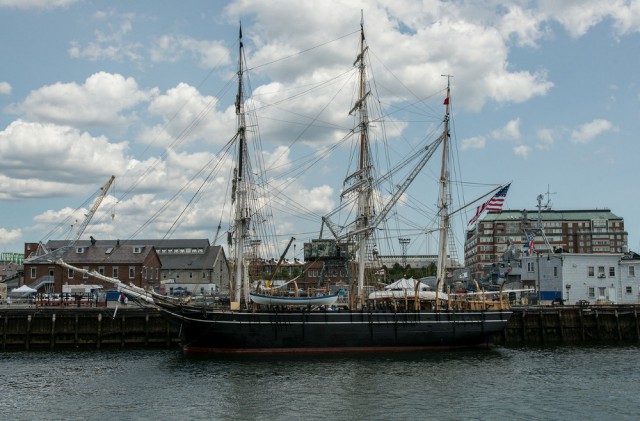
The Charles W. Morgan will travel from Boston to the Massachusetts Maritime Academy on Wednesday, July 23 to take part in the centennial celebration of the opening of the Cape Cod Canal. The ship will be towed through the canal at approximately 6 p.m. Any delay due to weather will be posted on the Mystic Seaport website.
The ship will dock at the academy and be open for public boarding on Saturday and Sunday, July 26-27.
This is the last major stop on the Morgan’s 38th Voyage. A National Historic Landmark, the Morgan was built in 1841 and sailed on 37 voyages around the globe during an 80-year whaling career. This voyage, the ship’s 38th, was undertaken to raise awareness of America’s maritime heritage and to call attention to issues of ocean sustainability and conservation. The ship departed Mystic Seaport on May 17 and visited New London, Conn., Newport, R.I., Vineyard Haven, Mass., New Bedford, Mass., the Stellwagen Bank National Marine Sanctuary, and Boston, where she tied up next to the USS Constitution.
Ship and Dockside Exhibit Open to Visitors July 26-27
The Morgan will be accompanied by a dockside exhibition, where visitors can learn about the ship, whales and whaling, and their importance to America. A video presentation and display panels explain the history and significance of the 173-year-old vessel, the important role the whaling industry played in America’s economic history, how the Morgan and whaleships were an early connector of different cultures, and how America’s perception of the natural world has changed over time. Hands-on activities include knot-tying, handling samples of wood used in the restoration, and searching the Morgan’s crew lists for familiar names or hometown connections.
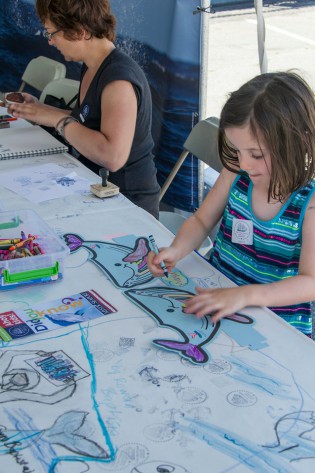
A focal point is Spouter, a 46-foot-long, life-sized, inflatable model of a sperm whale. Visitors can participate in a “What Bubbles Up?” activity by writing down their whale-related memory, question, or sketch and attaching it to a humpback whale sculpture.
Mystic Seaport interpreters will demonstrate the 19th-century maritime skills of a cooper, shipsmith, ropemaker, and whaleboat rower. There will also be live performances including sea chanteys, the interactive “Tale of a Whaler,” and a condensed rendition of the novel Moby-Dick, titled “Moby-Dick in Minutes.” Visitors will even have the opportunity to try their hand at rowing a whaleboat during select times.
NOAA’s Stellwagen Bank National Marine Sanctuary will have an exhibit booth to explain how the sanctuary interprets America’s maritime past, promotes ocean conservation, and engages in cutting-edge research. They will show how whales feed and what they feed on, and present videos that feature information on the National Marine Sanctuary System, whales, whale research, and whaling heritage.
The ship and dockside exhibition will be open from 9 a.m.-5 p.m. each day, with the last boarding of the ship to take place at 4 p.m. There is a suggested admission of $5 for those ages 6 and older. Mystic Seaport members and children ages 5 and younger are admitted free.
The Mystic Seaport dockside exhibition is funded in part by the National Endowment for the Humanities (NEH).
Lighting the Way
The MORGAN Sails to Boston
Boston — The Charles W. Morgan, a National Historic Landmark and America’s oldest commercial vessel still afloat, sailed into Boston on July 15 and docked next to the USS Constitution at the Boston National Historical Park at the Charlestown Navy Yard. The Constitution, built in 1797, is America’s oldest ship, and this is the first time the two vessels have ever been in the same port.
The Morgan sailed to Boston from Provincetown, Mass., after three days of sailing on the National Oceanic and Atmospheric Administration’s Stellwagen Bank National Marine Sanctuary, one of the world’s premier whale watching sites. The ship was in the sanctuary as part of a joint collaboration with NOAA to conduct outreach activities highlighting the sanctuary’s role in marine mammal conservation and maritime heritage preservation.
A Dockside Exhibition
The Morgan will be open to the public in Boston from July 18-22. In addition to touring the ship, visitors can learn about the Morgan, whales and whaling, and their importance to American history in a 22,000 square-foot dockside exhibition. There is a video presentation and display panels that explain the history and significance of the 173-year-old vessel, the important role the whaling industry played in America’s economic history, how the Morgan and whaleships were an early connector of different cultures, and how America’s perception of the natural world has changed over time. Hands-on activities include knot-tying, handling samples of wood used in the restoration, and searching theMorgan’s crew lists for familiar names or hometown connections.
A focal point is Spouter, a 46-foot-long, life-sized, inflatable model of a sperm whale. Visitors can participate in a “What Bubbles Up?” activity by writing down their whale-related memory, question, or sketch and attaching it to a humpback whale sculpture.
Mystic Seaport interpreters will demonstrate the 19th-century maritime skills of a cooper, shipsmith, ropemaker, and whaleboat rower. There will also be live performances including sea chanteys, the interactive “Tale of a Whaler,” and a condensed rendition of the novel Moby-Dick, titled “Moby-Dick in Minutes.” Visitors will even have the opportunity to try their hand at rowing a whaleboat during select times.
NOAA’s Stellwagen Bank National Marine Sanctuary will have an exhibit booth to explain how the sanctuary interprets America’s maritime past, promotes ocean conservation, and engages in cutting-edge research. They will show how whales feed and what they feed on, and present videos that feature information on the National Marine Sanctuary System, whales, whale research, and whaling heritage. Kids can even create their own whale hat.
The ship and dockside exhibition will be open from 9 a.m.-5 p.m. each day, with the last boarding of the ship to take place at 4 p.m. Admission is free.
Additionally, organizations along Boston’s waterfront, including the USS Constitution Museum and the Boston National Historic Park, will be hosting a festival of events to celebrate the Morgan’s stay. Port sponsors for the Morgan’s visit to Boston are Spaulding Rehabilitation Hospital and Walsh Brothers Construction, which uncovered oak timbers buried in the Charlestown Navy Yard and subsequently used in the Morgan’s restoration.
For details on public activities during the Morgan’s visit to Boston, please visit the National Park Service website.
From Whaling to Watching
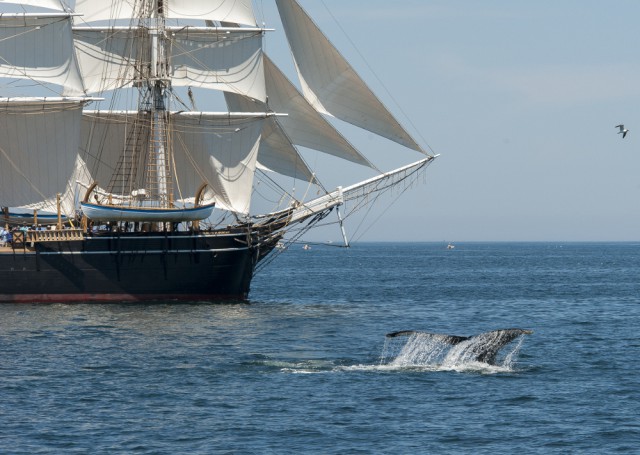
It was a journey many years in the making. The Charles W. Morgan sailed to Stellwagen Bank National Marine Sanctuary this past weekend carrying a message of hope and conservation.
During her 80-year whaling career, the Morgan‘s purpose was to hunt and harvest whales for oil and whalebone (baleen). At the time, whales were a primary source of illumination and lubrication. But technology moved on: petroleum products replaced whale oil, and plastic replaced whalebone. Also, our perception of whales and the natural world has changed as well. In 1841, whales were seen as an unlimited resource to exploit. Today, most cultures view them as creatures to be preserved, and the extent to which mankind hunted many of them almost to extinction is a cautious lesson in the limitations of the earth’s abundance.
Mystic Seaport partnered with NOAA’s Stellwagen Bank National Marine Sanctuary to bring the Morgan to sail among whales once again. However, this time the goal was to raise awareness of the fragile state of our oceans and how important they are in our ecosystem. Sailing an artifact of a defunct—yet once very important—industry among the creatures it sought to kill, offers an opportunity to compare current practices and technology with the past. Both the Morgan and the whales have survived and there are lessons in that survival.
As part of NOAA’s OceanLIVE online broadcast, oceanographer Sylvia Earle joined us on one of the days we were sailing in the sanctuary and she summed it up very succinctly: she called the Morgan a “ship of hope” for the oceans and the creatures that dwell within them.
A Second Day on Stellwagen
Provincetown, Mass. — For a second day on Saturday, the Charles W. Morgan sailed out onto the Stellwagen Bank National Marine Sanctuary to be greeted by whales feeding on the bank. Along with her support vessel F/V Roann and NOAA’s R/V Auk, the Morgan was surrounded by whales and the whale-watching fleet as everyone sought to follow what was an unusually large gathering in the area this year. The wind was light and faded away, but not before the Mystic Seaport staff was able to record some remarkable video to document the day.
A Return to the Whales
Provincetown, Mass. — Nearly 100 years after its last voyage, the whaleship Charles W. Morgan returned to sail among whales during a visit to the Stellwagen Bank National Marine Sanctuary, one of the world’s premier whale watching sites. On a day sail out of Provincetown, Mass. on Friday, July 11, the ship encountered humpback whales on the sanctuary. In company with the sanctuary’s research vessel Auk, the Morgan lowered a whaleboat to observe whales in a gesture to symbolize the change in humankind’s relationship with the oceans and marine mammals.
“This was an amazing day of sailing,” said Capt. Kip Files, the 22nd master of the Morgan. “To bring this historic vessel to this place, and to have her sail with humpback whales breaching right next to us, was really incredible. You can’t help but think about how much we as a people have changed. Where the Morgan once hunted whales, now she watches them with a message of conservation.”
The Morgan, a National Historic Landmark built in 1841, is the last of an American whaling fleet that numbered more than 2,700 vessels and is the flagship of the watercraft collection at Mystic Seaport, the nation’s leading maritime museum located in Mystic, Connecticut.
The Morgan is on its first sailing voyage since 1921. Over an 80-year whaling career, the Morgan sailed on 37 voyages to the remote corners of the globe. During this historic 38th voyage to ports across southern New England, the ship is spending several days from July 11-13 visiting the sanctuary. While there, the Morgan crew is teaming with the National Marine Sanctuaries staff to conduct outreach activities highlighting the sanctuary’s role in whale conservation and ocean research.
The public is able to follow the Morgan’s visit to the sanctuary on OceansLIVE (http://www.OceansLIVE.org), which broadcast from the vessel and other locations, offering interviews and commentary with historians, scientists, authors and artists discussing the shift from whaling to watching in New England.
Stretching between Cape Ann and Cape Cod, offshore of Massachusetts, Stellwagen Bank National Marine Sanctuary is a critical feeding and nursery ground for several whale and dolphin species, including the endangered humpback, North Atlantic right, sei, and fin whales.
The sanctuary is a center for whale watching in New England. Ongoing research at the sanctuary is focused on better understanding whale behavior so as to reduce whale mortality caused by entanglement in commercial fishing gear and ship strikes. Human-induced sources of underwater noise and their potential impacts on marine animals are also topics of substantial concern among scientists.
The Morgan will continue to sail in the sanctuary on Saturday and Sunday, July 12-13.
